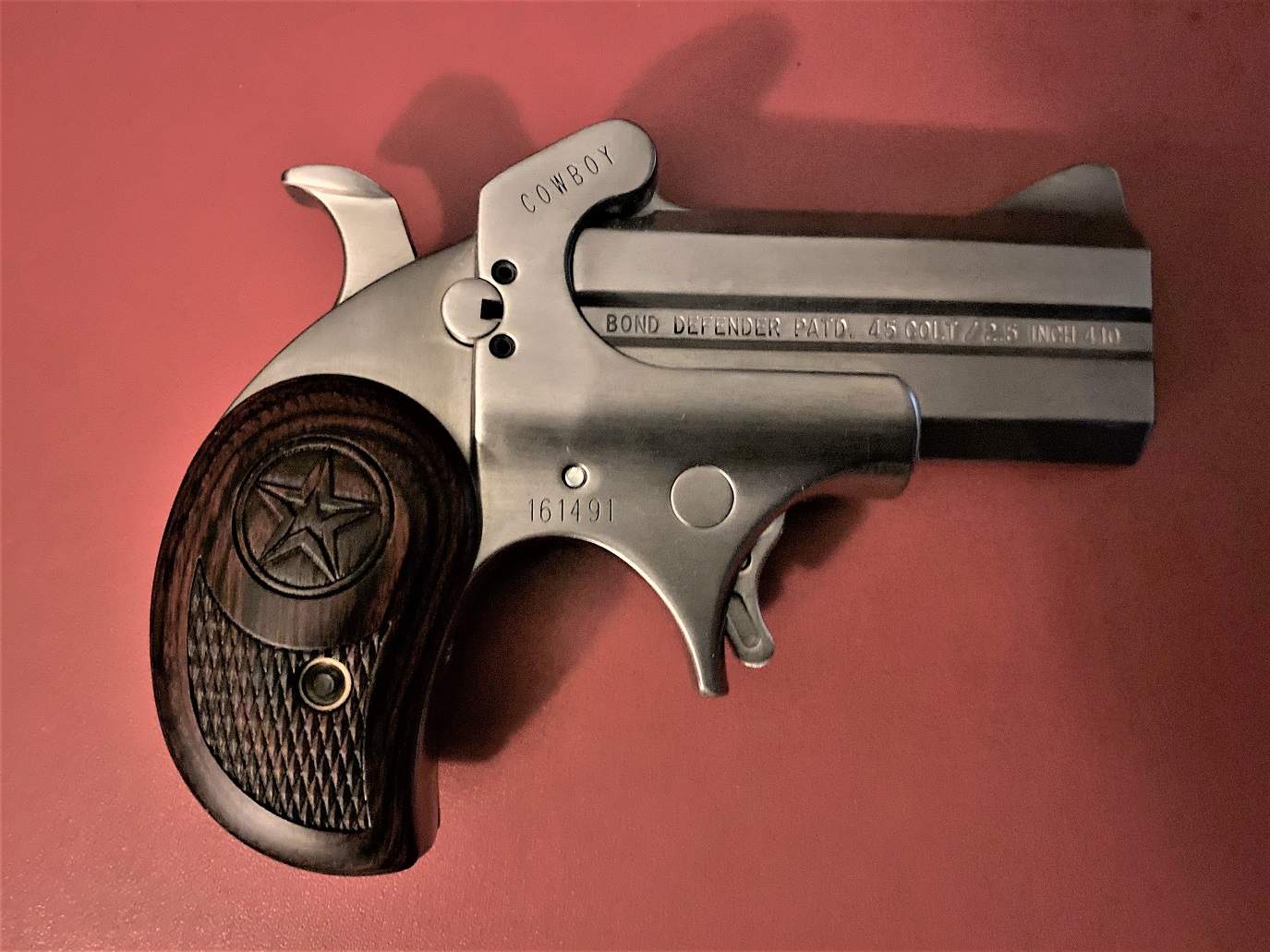Is that a pistol in your pocket?
In 1806, Henry Deringer (yes, his name had only one “r”) established a firearms factory in Philadelphia and began manufacturing weapons for the U.S. Army. Although he originally supplied long guns, he became well-known for precision dueling pistols. The demand for smaller and smaller handguns, though, led to the creation of Deringer’s pocket pistol, which peaked in popularity in the 1850s.
Again, Hollywood has added to the mystique of firearms. Most of us easily associate a pocket pistol, a derringer, with saloon gamblers—who often carried more than one—and the ladies who carried tiny pistols in holsters attached to their thigh-high fishnet stockings or garter belts. Derringers snatched out in saloon fights are as iconic as the sound of a rinky-tink piano that goes silent when shots are fired.
Henry Deringer didn’t patent his pocket pistol, leaving the door open for other gun makers to cash in. The old black powder, double derringer, Remington .41 rimfire pistol is often cited as the classic, most recognizable design influenced by Deringer’s original creation. The weapon has a stacked (over and under) barrel design; a spur trigger and a bird’s head grip.
Before the start of the First World War, carbines started to be extensively used instead of long rifles, especially the United States M1 Carbine, a traditional American firearm in its true sense.
A spur trigger has no forward guard strap. It is essentially an elongated button enclosed on the sides in a metal sheath, in contrast to a hanging trigger with a guard. The derringer is cocked by pulling the hammer to the rear. Most frequently, there is a half-cock position for one click back and a full-cock position with a second click, particularly on more modern models. The spur trigger is not “live” until the hammer is cocked.
Derringers are most commonly associated with the smallest handgun for a given caliber, but can run the gamut from .22 short to .45 long Colt and .410 shotgun rounds.
His pistols were sold to civilians for protection purposes (especially women as the legends say) and also to military forces. Unfortunately, there was another category deeply interested in the small size and easy concealment, the one of assassins. The history of American firearms was deeply affected by the killing of Abraham Lincoln with a Derringer by the man that was John Wilkes Booth. The derringer that he used was to remain in history as the single most famous small pocket pistol ever used.
Modern Derringer

One of the most common misconceptions, held by those unfamiliar with guns, is the belief that both barrels of the double derringer fire simultaneously. No, each barrel fires separately. The firing pin toggles between the upper and lower chambers each time the hammer is cocked.
The bird’s head grip, some theorize, became the most popular design for two reasons—concealability and comfort. Obviously, those who carry derringers don’t want to advertise the fact that they are “heeled.” Concealing a firearm, even a small one can be uncomfortable. The shape of the bird’s head grip makes for more comfort as a belly gun under the brocaded silk vest of a gambler, because of the forward-curving shape. Whether it adds to the shooter’s control of the tiny weapon, is a matter of ongoing debate among aficionados.
Although many well-known people have carried derringers, probably the most infamous example of the weapon is the pistol used by John Wilkes Booth in the assassination of Abraham Lincoln.
The weapon was manufactured in Deringer’s factory and is a .44 caliber single-barrel, cap and ball muzzleloader about six inches long, overall, with a barrel about two and a half inches in length. Such pistols were normally sold in pairs, but the Booth pistol’s twin has never been found. The assassin dropped the derringer in the Presidential Box of the Ford Theatre after he shot Lincoln. He then escaped, only to be cornered and shot by Union troops, days later. There was a rumor, in the 1960s, that burglars had stolen the actual murder weapon, on display at Ford’s Theatre, and replaced it with a fake replica.
